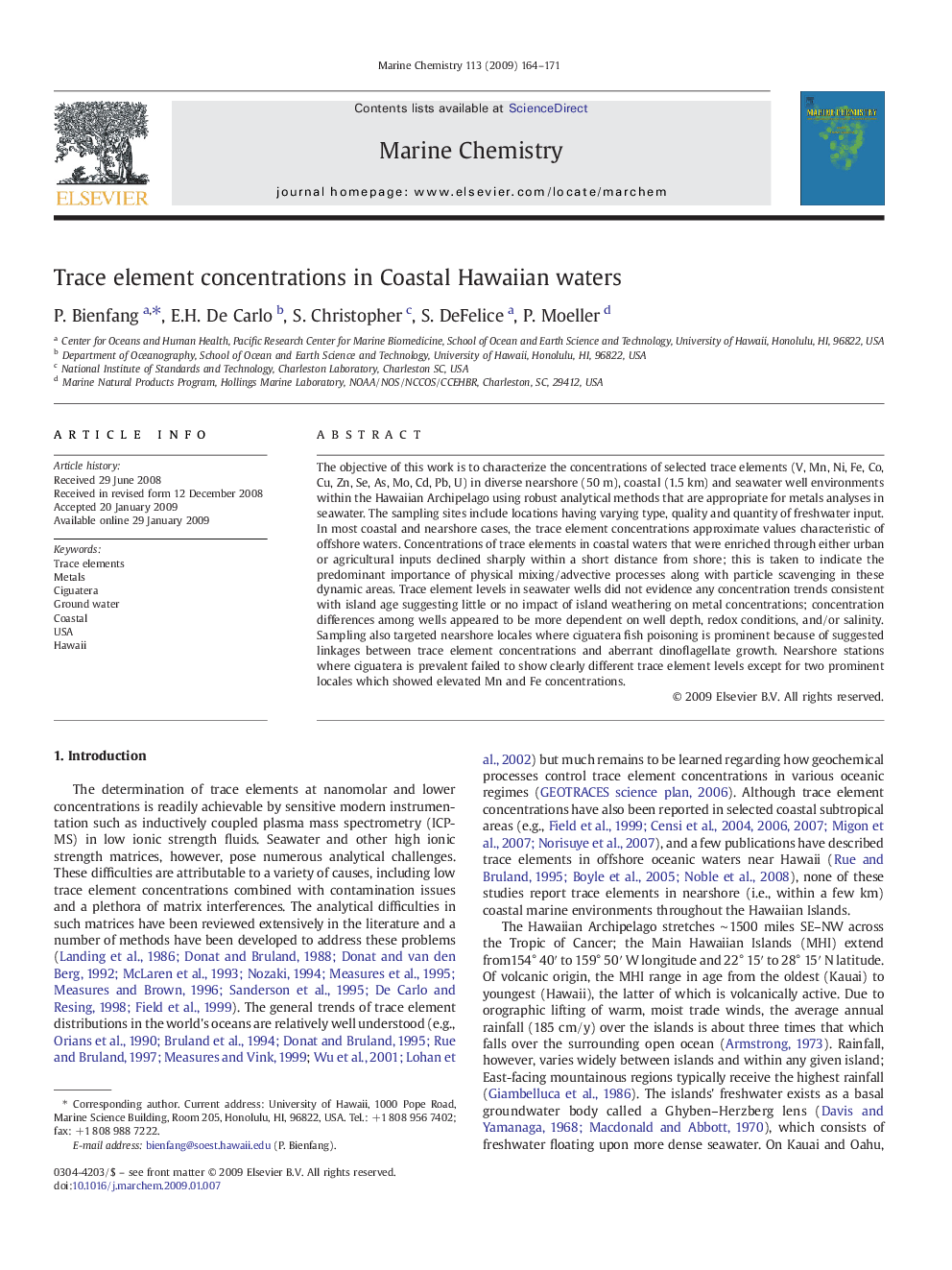| Article ID | Journal | Published Year | Pages | File Type |
|---|---|---|---|---|
| 1261936 | Marine Chemistry | 2009 | 8 Pages |
The objective of this work is to characterize the concentrations of selected trace elements (V, Mn, Ni, Fe, Co, Cu, Zn, Se, As, Mo, Cd, Pb, U) in diverse nearshore (50 m), coastal (1.5 km) and seawater well environments within the Hawaiian Archipelago using robust analytical methods that are appropriate for metals analyses in seawater. The sampling sites include locations having varying type, quality and quantity of freshwater input. In most coastal and nearshore cases, the trace element concentrations approximate values characteristic of offshore waters. Concentrations of trace elements in coastal waters that were enriched through either urban or agricultural inputs declined sharply within a short distance from shore; this is taken to indicate the predominant importance of physical mixing/advective processes along with particle scavenging in these dynamic areas. Trace element levels in seawater wells did not evidence any concentration trends consistent with island age suggesting little or no impact of island weathering on metal concentrations; concentration differences among wells appeared to be more dependent on well depth, redox conditions, and/or salinity. Sampling also targeted nearshore locales where ciguatera fish poisoning is prominent because of suggested linkages between trace element concentrations and aberrant dinoflagellate growth. Nearshore stations where ciguatera is prevalent failed to show clearly different trace element levels except for two prominent locales which showed elevated Mn and Fe concentrations.
